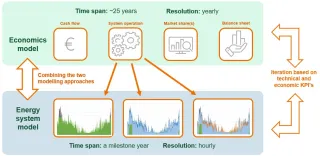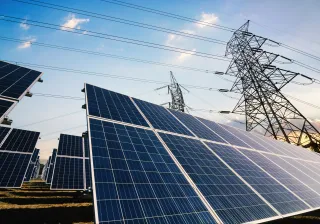The heating and cooling sector is responsible for considerable greenhouse gas emissions in the world. District heating, a centralized system distributing heat to multiple households, is a key strategy for improving heating efficiency and achieving decarbonization in the heating sector. Despite its advantages, challenges remain. In this blog, we explore the problem landscape of district heating’s energy transition and share insights from a VTT iBEX project, where team Transcend studied the topic of future-proof district heating and how it could be made into reality.
District heating systems, often built decades ago, were designed for past operating conditions. These systems typically operate at high temperatures (around 100°C) and rely on centralized heat production through fuel combustion. However, as we seek to incorporate excess and renewable heat sources like geothermal and solar energy, the outdated system principles hinder efficient utilization and economic feasibility. Lower temperature requirements would enhance efficiency, but the existing heat distribution infrastructure remains an obstacle to progress. This challenge is not an unorthodox one but rather something that emerges often within a systemic transition.
What does a future-proof district heating system look like?
In envisioning a future-proof district heating system, stakeholders’ perspectives vary. Researchers advocate for a smart and resilient system with lower distribution network temperatures, enabling efficient and diverse use of different heat technologies, such as excess and renewable heat sources, storage, and heat pumps. The topics of both low-temperature district heating and system resiliency are well-researched, and while researchers have models for assessing system performance, the solution must also consider often overlooked aspects: the transitional phase, social dynamics, institutional factors, and political context.
At VTT, we understand that our research will not come alive if we don’t recognize the roles and motivations of all the involved actors in the system, including the ones who make the key decisions and implement the change. Moreover, we often tend to think we are already familiar with the problem and hastily jump into solving it and offering results as solutions, that are commonly considered from a techno-economic perspective only.
Transition requires partnerships and cooperation
District heating systems involve multiple stakeholders who influence the system's development. For instance, buildings, including owners and property managers, play a crucial role in maintaining the building's heat distribution system. The collective efforts in maintenance of connected buildings have a cumulative impact on the efficiency of the entire system. Stakeholders can have unique preferences for the future, which must be considered for the system to serve the different parties. A good example is the transition to a low-temperature distribution, which requires balancing costs and benefits among the stakeholders. Uneven distribution can prevent the transition. Changes may be needed in buildings’ substations and even in internal heat distribution such as a radiator-based heat distribution. While building owners bear the costs, the benefits fall mostly to the district heating company. A method for assessing and quantifying these costs and benefits, and an arrangement to balance them between the stakeholders is necessary.
Quantifying benefits and costs of low-temperature transition
In the 2023 VTT iBEX project, we focused on developing a tool that describes a systemic transition from the viewpoints of different stakeholders to help visualize the transition better from a long-term perspective.
As a case example, our team used a district heating system, where the district heating company plays a key role in enabling the transition to low-temperature district heat distribution. We decided to describe the transition by showing how it affects the company's cash flows and balance sheet over the years. We have also included energy system modelling to show how the transition technically affects the operation of the network. This approach could also be applied to, for example, property owners, as it helps to understand and quantify the benefits and costs involved. By learning from already implemented transitions to low-temperature distribution, we can demonstrate to the key stakeholders how the transition affects their business, and most importantly, what happens if the transition is not done at all.
This year in the Transcend project, we will continue the work, and strive for cooperation with industrial actors. We look forward to learning from key stakeholders how the tool could be further developed, and how it could serve to long-term energy system planning in the industry.






